Commentary
India’s State Emblem Has Fangs
Sanjeev Sanyal
Jul 13, 2022, 09:07 AM | Updated 09:07 AM IST
Save & read from anywhere!
Bookmark stories for easy access on any device or the Swarajya app.
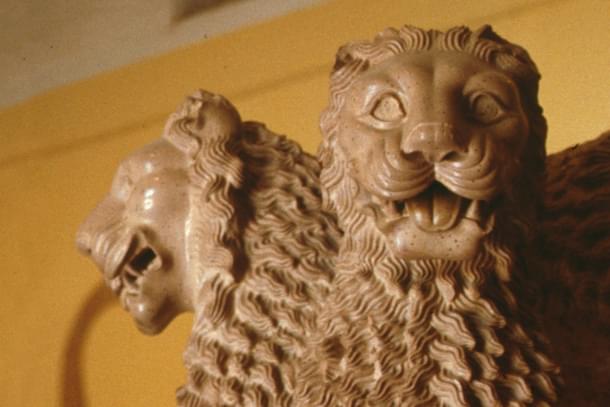
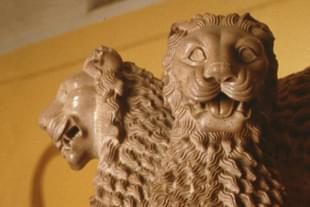
Earlier this week, Prime Minister Narendra Modi unveiled a bronze cast replica of the Mauryan lions of Sarnath, the symbol of the Indian State, on top of the new parliament building. The event was immediately accompanied by howls of protest from those who argued that the lions have been depicted baring their fangs and, consequently, look too aggressive. Is this criticism justified?
The most obvious thing to check is whether or not the original Sarnath lions bare their fangs. Even a cursory look shows that the Mauryan lions show their teeth. The Mauryans were unapologetic empire builders and the lions stood at the place where ancient India’s most important highways met – the Uttarapath and the Dakshinapath. It was a proclamation of the power of the State to be carried in all directions. This is why it was chosen as the emblem of the Indian Republic. Note that it is not the national symbol but the emblem of the Indian State (that is why a private company or individual cannot use it as a logo).
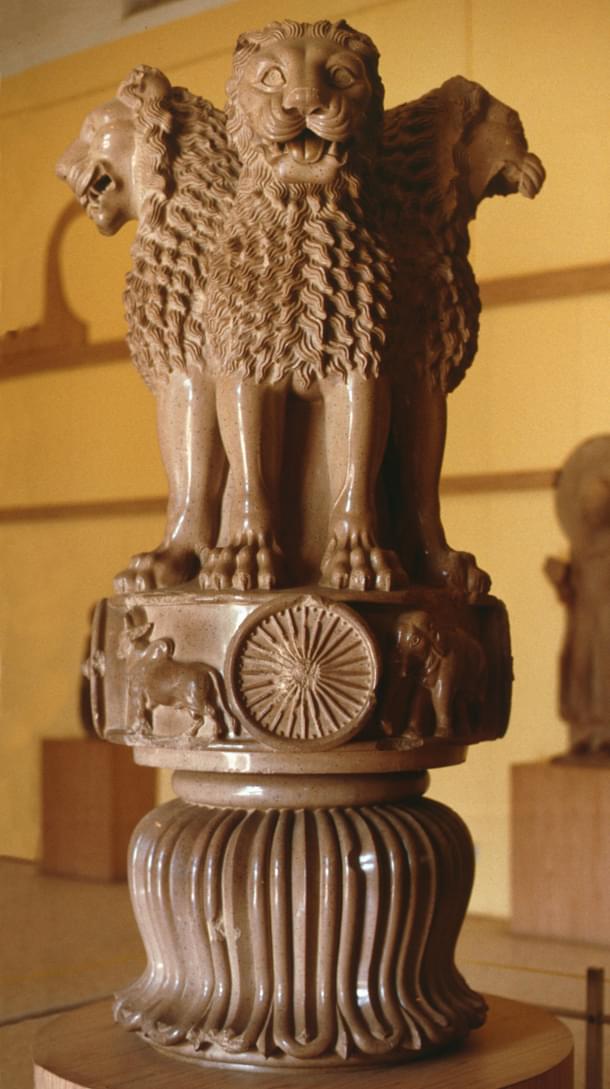
(The Lion Capital)
Why is it then that so many people were under the impression that the Sarnath lions are shy of their canines? An important reason is that official depictions since the nineteen-fifties had distorted the image to make them look more benign in order to conform to the myth of a pacifist past. There are several ways this was done. In some cases, the mouth was closed or the growl is turned into a grin. One example is the depiction on top of Bengaluru’s Vidhana Soudha where the lions have their mouths firmly shut.
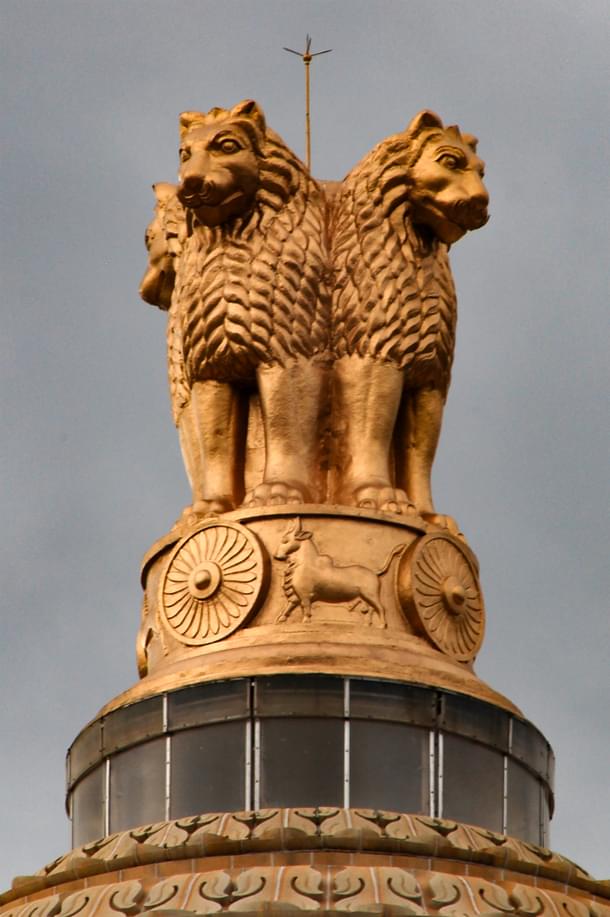
(© Moheen Reeyad / Wikimedia Commons / "Lion Capital of Ashoka, Vidhana Soudha (03))
Ironically, the most blatant distortion is in The State Emblem of India (Prohibition of Improper Use) Act 2005. The whole purpose of the law is to stop improper depiction of the state emblem and it includes an officially sanctioned version. However, as can be seen below, the version is itself a distortion that shows the front lion without fangs but seeming laughing with its tongue hanging out (the lions on the side do retain their canines). Don’t take my word for it, just look it up on the official website.
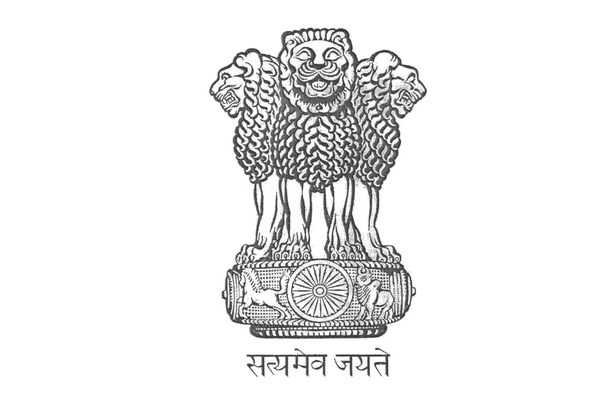
The attempt to tone down the state emblem is just one instance of post-Independence India trying to build a mythical pacifist history to conform to an equally tilted narrative about India’s Freedom Struggle being almost entirely non-violent. This is also true of the story of Emperor Ashoka becoming a pacifist Buddhist after the Kalinga War. The truth is that no primary text links Ashoka’s conversion to Buddhism to regret over the death and destruction in Kalinga. All the evidence suggests that he was already a practicing Buddhist years before the war. Even the supposed “regret” expressed in one of his edicts is just a prelude to threatening a local forest tribe with the same violence. Buddhist texts from Sri Lanka clearly mention how Ashoka ordered mass killings of Jains and Ajivikas well after his conversion.
In short, the controversy about the new bronze lions has much to do with people finally confronting the reality that the Sarnath originals bare their fangs. Nonetheless, no one seems to have commented in two significant ways in which the replicas do deviate from the original. First, the new lions seem better fed than the Mauryan lions. Second, they have eyes inserted into the empty sockets of the originals. This may give the impression of being more aggressive at some angles – but do remember that the Sarnath lions too had eyes when the Mauryans had first put them up. So the impression of the new lions may not be different from the original intent.
(The author is an economist and bestselling writer. All opinions are personal).





